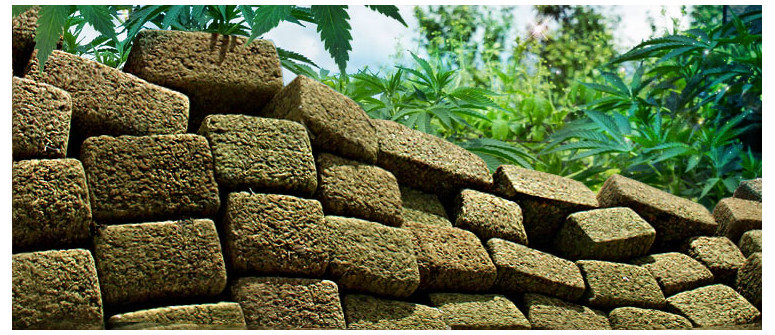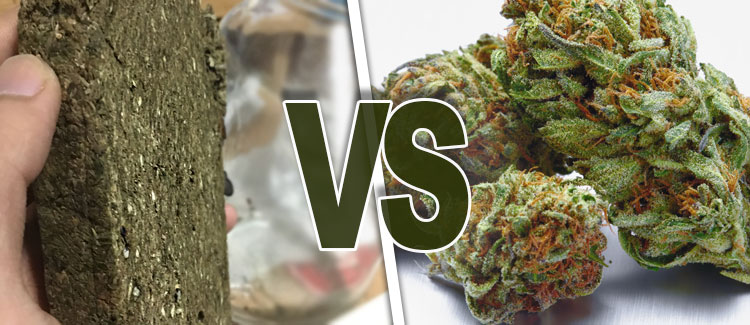The rise and fall of 'brick weed'

Brick weed is low-quality cannabis formed into a brick for transportation. It's becoming much rarer these days due to an abundance of higher-quality legal and illicit products.
Remember brick weed? Well, many (lucky) people have never heard of it. Widespread legalization has led to large-scale innovations and a massive boom in product quality and diversity. However, things have not always been this way.
When cannabis was more of a black market product than it is now, weed was usually being grown in some far away country and sellers could reap massive rewards for minimal work and get away with selling poor-quality products to customers who had no other options. Brick weed is a perfect example of this.
WHAT IS BRICK WEED?
Ever picked up some bud from the local street salesman and noticed that it’s much flatter and two-dimensional than the usual flowers you are used to seeing? This odd phenomenon isn’t necessarily because it’s been stuck in your dealer's back pocket for the last week; it may be because it was crammed into the shape of a brick.
Brick weed is very much like what it sounds; it’s basically weed squashed into the shape of a brick to make it more suitable for illegitimate transportation and smuggling. Brick weed is renowned for its poor quality, and is reported to very often have its roots in Mexico. Brick weed in Europe usually originates from Albania.
THE QUALITY OF BRICK WEED
The fact that brick weed has been violently compressed and mashed together to form condensed blocks of cannabis reduces its quality. This process, as well as the bumps and bruises it endures during transportation, can knock trichomes off of the flowers. Trichomes are the small glands that produce the precious resin containing all the desirable cannabinoids and terpenes every stoner craves. If this part of the anatomy is reduced in number, the high is reduced in potency.
Brick weed is also notorious for not being exclusively “weed.” When buying from a decent dispensary, many people envision big, crusty nuggets, with little of anything else. Brick weed will contain flowers, but will also come along with stalks, leaves, stems, and even seeds. Excess parts of the plant make bricks appear heavier, yet this isn’t all prime flower. The presence of these components comes down to both much faster processing times and increased profit.
IS BRICK WEED WORTH THE PURCHASE?

The answer to this question is a straight-up no. You might be able to purchase large amounts of brick weed for a vastly reduced price, but even this isn’t guaranteed. If the seller is attempting to sell brick weed at a normal price and hoping the buyer isn’t aware, then you’re just spending the same amount of money on an inferior product.
Chances are you won’t know any valuable information about the product, and you definitely won’t be aware of how it’s grown. Dispensaries can provide any information from strain name, to cannabinoid percentage, to terpene profile, and effects. Purchasing brick weed is a game of roulette in comparison. If you live in an area yet to legalize and have no other choice, then perhaps it's worth it. Or, perhaps it’s worth finding a dealer with a better hookup.
HOW COMMON IS BRICK WEED?
Brick weed used to be extremely common when prohibition was in full swing, but is now a much rarer sight. The ability to walk into a store and know exactly what you are buying is significantly reducing the demand for smuggled brick weed. Some people with such access may still choose to buy it due to reduced cost and a good source, but for the most part it’s not that common these days.
Any respectable black market dealer trying to make a buck without screwing over their customers will usually take the time and energy to source their bud from higher-quality suppliers.




